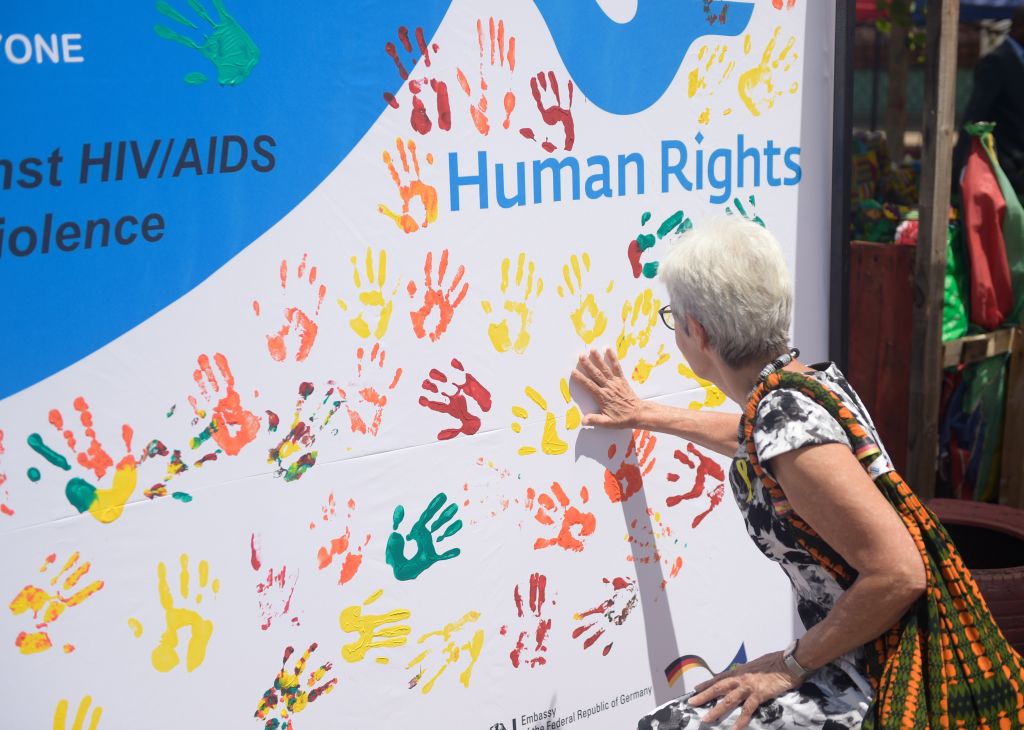U.S. scores very low on human rights report card
INDIANAPOLIS (WISH) — A new report that grades all the countries of the world on their respect for human rights paints a grim picture of human rights practices in the 21st century.
Produced by the Global RIghts Project (GRIP), a research team based in the University of Rhode Island’s Center for Nonviolence and Peace Studies, the report draws on a vast quantitative human rights dataset to grade each country’s human rights practices on a 100-point scale. The report found that 60% of the world’s countries get an ‘F’ (a score of 0-59) for their human rights practices, while only about 20% of countries receive a grade of ‘A’ or ‘B’ (a score of 80-100). The global median score was 50.
“We show that most countries of the world are failing to protect their citizens’ most basic rights,” said Skip Mark, an assistant professor of political science at URI and director of the Center for Nonviolence and Peace Studies. “We think these findings make it clear that there’s a lot of work to do in terms of ensuring that all people have a chance to live a life of dignity and respect. We hope objective measures of human rights practices in this report will be a resource for policymakers, nongovernmental organizations, researchers, and anyone else interested in improving human rights around the world.”
GRIP grades are based on the extent to which countries respect a suite of 25 individual human rights. Those rights include physical integrity rights such as freedom from torture or political imprisonment, empowerment rights such as freedom of speech and assembly, worker rights such as the right to unionize and freedom from child labor, and justice rights such as the right to a fair trial.
Measures of the rights that comprise the GRIP grades are derived from the CIRIGHTS Data Project, the largest quantitative human rights dataset in the world. Drawing on human rights reports from the U.S. Department of State, Amnesty International, the United Nations’ State of the World’s Indigenous Peoples Report, and other sources, CIRIGHTS aims to collect objective measures for every recognized human right in every country. By creating a composite score using the 25 representative rights, the GRIP report seeks to provide an overall picture of each country’s human rights practices.
“It’s been at least 40 years since there has been an annual human rights report card for all nations of the world,” said David Cingranelli, a professor at Binghamton University and a co-leader of the CIRGHTS Data Project. “This report gives us an objective measure of human rights using a methodology that’s transparent and replicable.”
Human rights around the world
According to the report, the five top countries for human rights were Finland (with a grade of 98 or ‘A’), Australia (92, ‘A-’), Estonia (92, ‘A-’), Sweden (92, ‘A-’), and Austria (90, ‘A-’). The bottom five were Iran (0, ‘F’), Syria (6, ‘F’), Yemen (8, ‘F’), Venezuela (12, ‘F’), and Egypt (14, ‘F’). Canada had the highest grade in the Americas with an 88 (B). Taiwan led Asian nations with a score of 78 (C+), while Cabo Verde had the highest score in Africa with an 84 (B). The United States had a score of 64 (D), ranking 59th worldwide.
The researchers also looked at the characteristics of countries that were correlated with better or worse human rights. They found that:
- Democracies tend to have significantly better human rights, with GRIP scores 24 to 27 points higher than autocracies.
- Small-population countries tend to have better human rights. The smallest countries score 30 to 35 points higher than the largest countries.
- Wealthy countries have better human rights. The poorest countries have a human rights score that is 34 to 40 points lower than the richest countries.
Given these characteristics, the score for the U.S. (64) is unsurprising, the researchers say. The U.S. is a wealthy country, which correlates with better human rights. But it also has a large population, which correlates to worse rights. Democracy monitoring organizations such as the Center for Systematic Peace have downgraded the U.S. from a full democracy to an anocracy (a middle ground between full democracy and autocracy) in recent years.
“Given what we know about the way a country’s characteristics correlate with human rights, the U.S. falls about where we’d expect it to be,” Mark said. “However, if the U.S. is no longer a democracy and democratic backsliding continues then human rights are likely to significantly decline in the near future.”
While the U.S. had strong scores for several civil and political rights, it continues to violate many labor rights, women’s rights, and civil and political rights such as freedom from torture and extrajudicial killings, the researchers found.
The report also shed light on which rights tend to be the most and least protected. That analysis found the civil and political rights (freedom of movement, freedom from political imprisonment, freedom from extrajudicial killing) are the most protected rights worldwide, while economic rights (freedom from child labor, the right to unionize, the right to reasonable work hours and safe working conditions, freedom from human trafficking) are the least protected worldwide.
“This suggests that a focus on improving economic rights may have the biggest immediate impact in terms of improving people’s lives worldwide,” said Mark.
Rights declined significantly during the COVID-19 pandemic as well. For example, GRIP scores related to human trafficking declined 62% in the two years after the onset of the pandemic compared with the two years before. That’s likely because those who suffered the economic consequences of the pandemic became more susceptible to trafficking, the researchers say. Other rights including the right to unionize, electoral self-determination, and freedom of movement also declined significantly.
